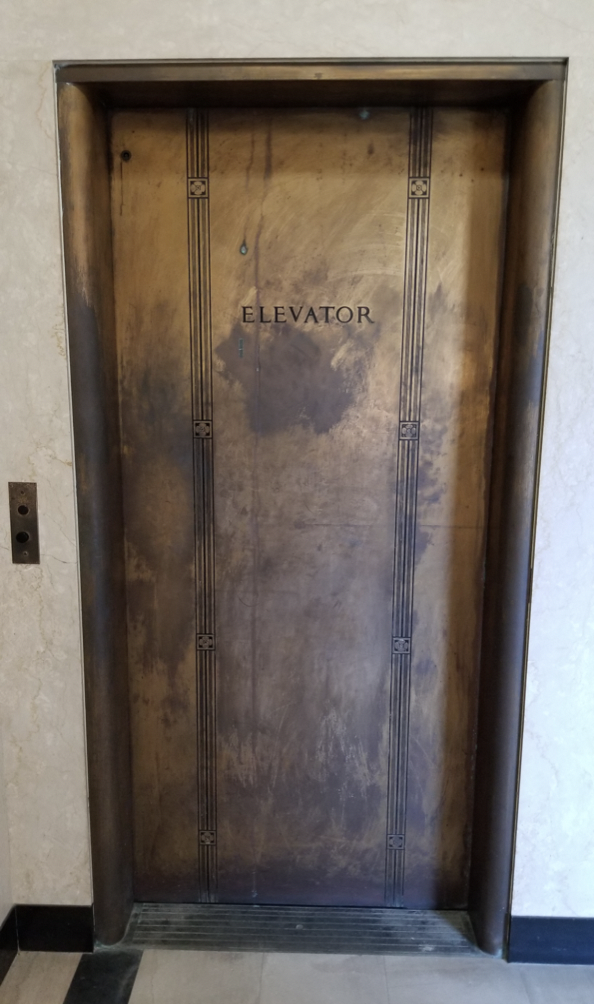
By Terry Hamburg, Director of the Cypress Lawn Heritage Foundation
 A columbarium is structure that holds only cremated remains. This original columbarium on the East Campus of Cypress Lawn — the first in the United States to be built inside cemetery grounds — dates from 1893, a year after Cypress Lawn opened. There was space for 1,000 inurnments. Simultaneously, Cypress Lawn opened the first crematory in Northern California.
A columbarium is structure that holds only cremated remains. This original columbarium on the East Campus of Cypress Lawn — the first in the United States to be built inside cemetery grounds — dates from 1893, a year after Cypress Lawn opened. There was space for 1,000 inurnments. Simultaneously, Cypress Lawn opened the first crematory in Northern California.
An earthquake in 1957 compromised the original structure. Some of the remains had to be removed and placed elsewhere, and no additional inurnments can occur there at this time.
The columbarium is now closed to the public, but you can look inside at the mosaic floor inscribed “Disturb Not the Remains of the Dead” and see the spiral staircase that leads to the structure’s second level.
By the 1920s, cremation was becoming an option for an increasing number of California families. Bernard Cahill — the renowned architect who designed the original Cypress Lawn Mediterranean style administration building on the West Campus and the grand public mausoleum behind it — took on his last major Cypress Lawn project: the proposed 20,000-square-foot Lakeside Columbarium just south of the grand entrance gateway within the East Campus.

A picture of Cypress Lawn from a 1930s postcard.
Construction began in 1927. Then came the Depression and work on the building abruptly stopped in 1930. Fortunately, the ground floor was finished. It featured 29 varieties of imported Carrera marble, elaborate closed and open-faced niches, opalescent glass skylights, and a dozen private rooms facing the lake. A small fourth floor, which contained rows of more modest niches, was also ready to be populated. The master plan called for 10,000 niches, which would have made this facility the world’s largest columbarium.

A view of the columbarium from a 1930s postcard
The structure, which included a spectacular interior courtyard and was topped by a glass roof, was left unfinished. Its effect, not unlike that of an ancient ruin, is surreal. The area is not open to the public.
 Over the years, numerous plans have been presented to complete the project. Cypress Lawn is currently reviewing a new proposal for this charmed spot.
Over the years, numerous plans have been presented to complete the project. Cypress Lawn is currently reviewing a new proposal for this charmed spot.
Below are some interesting additional historical facts about Cypress Lawn:
 Cypress Lawn founder Hamden Noble directed that Cahill should also include pigeon cotes on the east side of the Lakeside structure for his beloved brown-winged turbit pigeons. Today, the crows have taken over.
Cypress Lawn founder Hamden Noble directed that Cahill should also include pigeon cotes on the east side of the Lakeside structure for his beloved brown-winged turbit pigeons. Today, the crows have taken over.- Within the Lakeside Columbarium, you can take a classic Art Deco elevator to the fourth floor, which is known as Angel’s Court. There are no options to get to the second or third floors.
 Interested in learning more about the fascinating history of Cypress Lawn? Visit the Cypress Lawn Heritage Foundation website for more stories of the interesting and notable Californians who are laid to rest within our serene and beautiful Memorial Park.
Interested in learning more about the fascinating history of Cypress Lawn? Visit the Cypress Lawn Heritage Foundation website for more stories of the interesting and notable Californians who are laid to rest within our serene and beautiful Memorial Park.




